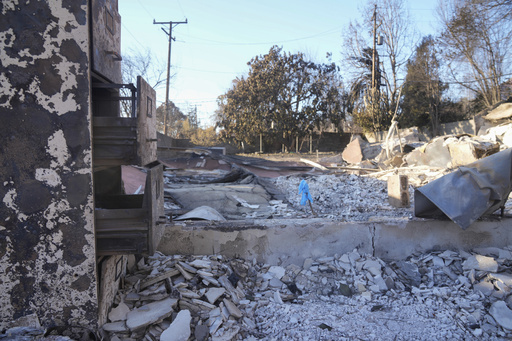Good news is finally on the horizon! Winds have calmed down, and officials are hopeful that evacuation orders in fire-ravaged areas will soon be lifted. The Eaton Fire has burned over 14,000 acres, but with containment now at 55%, residents may begin returning to their homes as early as next week. Repopulation efforts are expected to start in neighborhoods deemed safe.
Palisades Fire evacuations still in effect
While the situation is improving, danger is far from over. The mandatory evacuation zone for the Palisades Fire remains in effect, stretching from the Pacific Ocean to the 405 Freeway, San Vicente Boulevard to the south, and the Encino Reservoir to the north. Though some residents are allowed to return to select neighborhoods, many evacuation orders will stay in place for at least another week.
But there’s a catch. As Los Angeles Fire Chief Kristin Crowley warns, hot spots still linger in the Palisades Fire area, now 27% contained. The fire isn’t out yet, and new dangers may arise as the weather shifts.
Another Santa Ana wind event looms
The upcoming week could bring another Santa Ana wind event. While the winds are expected to be milder than before, the threat isn’t gone. Hot spots remain, and more fire activity is possible. As if that wasn’t enough, officials are sounding the alarm about another problem: the toxic debris left behind by the fires.
Toxic debris poses new Ddanger
Mark Pestrella, chief of the Los Angeles Public Works Department, highlighted the devastation caused by the fires. “Properties are damaged beyond belief,” he said. Homes are now filled with hazardous materials, sediment, and debris. And the risk doesn’t end with fire. Winter rains are about to create new complications.
Without proper cleanup, these toxic remnants pose a serious danger. Pestrella explained that stormwater runoff could carry debris through communities, potentially creating massive, debris-laden flows that would endanger human health. Local flood control systems, already damaged by the fires, will be tested by these flows. Both the Palisades and Altadena regions face significant risk of flooding when the rains come.
Pestrella assured that the government is on it. The city and federal officials are working together to clear toxic remnants, ensuring that debris removal efforts are underway. But the big worry is winter rain. With infrastructure already damaged, many areas can’t safely deliver power, water, or sewer services. This creates a serious problem for residents still in the evacuation zones.
Rains could make the situation worse
“Once the rains hit, we expect to see dangerous debris flows,” said Pestrella. Flooding could affect all areas, leaving streets and communities vulnerable. Plans are already in motion to contain the debris as much as possible during rain events. But it’s a race against time.
Southern California is currently experiencing a La Niña cycle, which usually brings colder, drier conditions. However, this can change quickly. The National Weather Service is predicting a shift in the weather later this month. Although Southern California’s rainiest months typically span from January to March, the forecast suggests there’s a 40-50% chance of below-normal precipitation between January 22-26. This means less rain than usual, but it still doesn’t eliminate the risk.
Pestrella issued an early warning to the public: “We expect the window for rain to open later this month. Our teams are already working to make sure the flood control and street systems are ready for the worst-case scenario.”
Rebuilding starts, but challenges persist
With the prospect of rain on the horizon, preparations are intensifying. Southern California’s recovery from the fires will be a long, hard road. But the region is taking steps to rebuild. The focus now is on protecting homes and businesses from further damage caused by toxic debris and potential flooding.
Vigilance is key as Southern California faces new threats
As the weather shifts, SoCal residents will have to stay vigilant. Evacuation orders are lifting, but the real work has only just begun. Authorities are working to ensure that the region’s flood systems are ready and that debris is cleared, but only time will tell if the stormwater will cause more damage.
For now, as the rebuilding process starts, Southern California holds its breath, hoping the worst of the storms will pass. But even as neighborhoods begin to repopulate, officials urge residents to stay cautious, as the danger from winter rains remains a serious threat.
Stay safe, stay informed, and keep watching as the next chapter unfolds in Southern California’s battle against fire, debris, and the elements.



